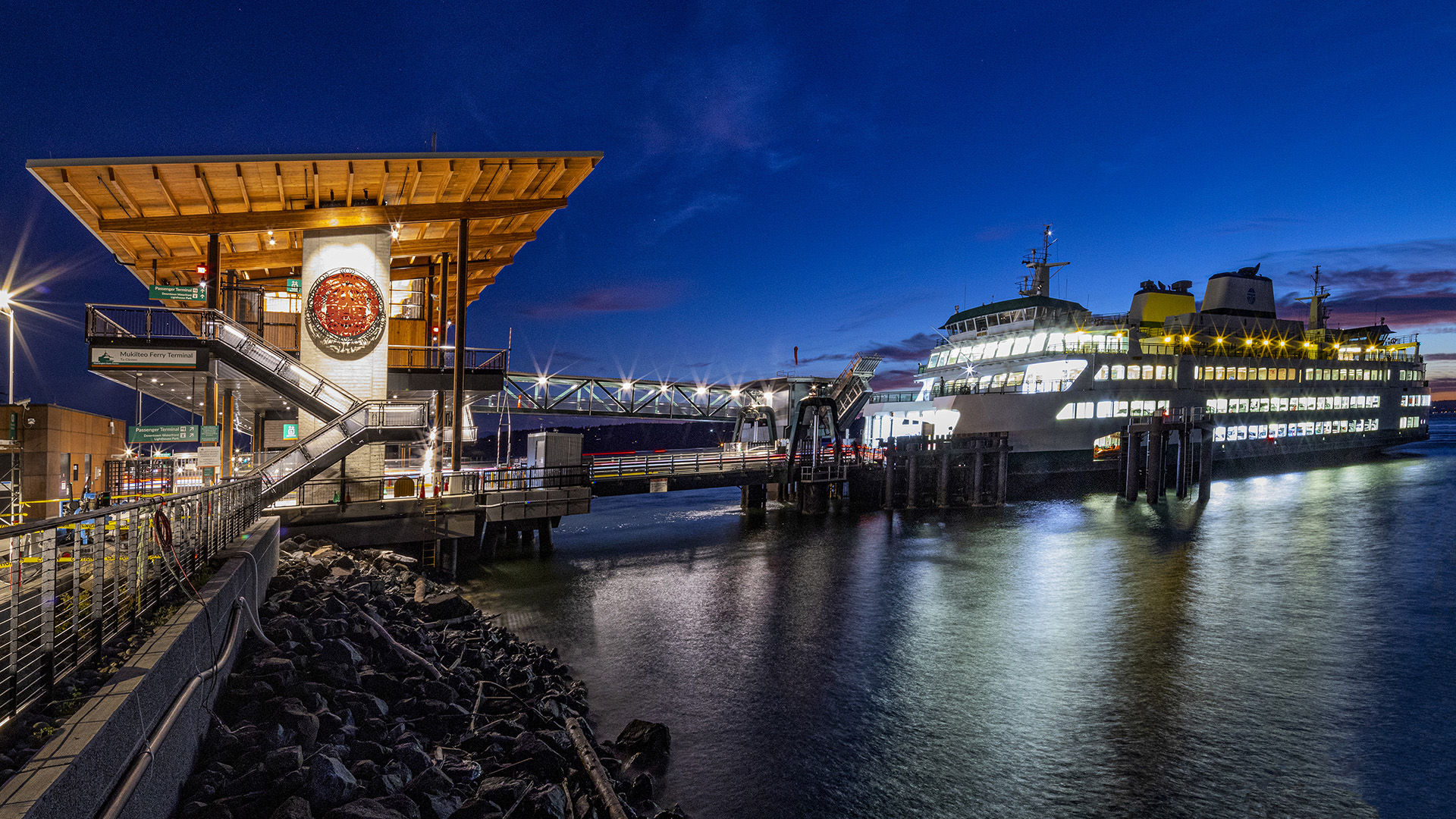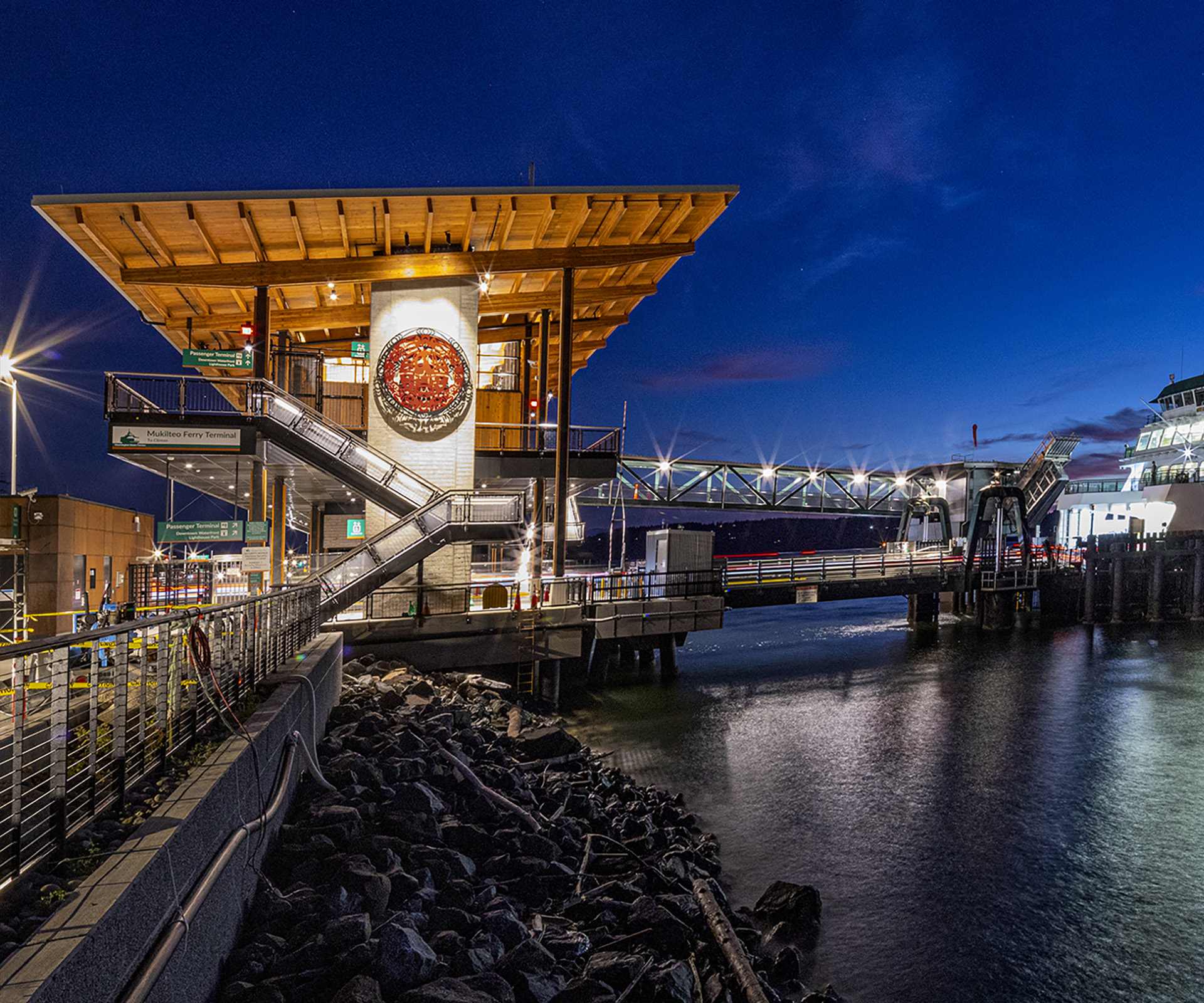Mukilteo Multimodal Ferry Terminal
Mukilteo, Washington










Civil Engineering, Construction/Project Management, Structural Engineering, Waterfront Engineering
Ports & Waterfront, Transportation/Transit
LEED Gold
ASCE, Outstanding Civil Engineering Achievement Honor Award. 2023
ASCE, Region 8, Project of the Year Greater than $10 Million, 2021
ASCE, Local Outstanding Civil Engineering Achievement Award, Ports and Waterways, 2021
ACEC, National Honor Award, Transportation Projects, 2022
ACEC, Washington State, Gold Award, Transportation Projects, 2022
ENR NW, Regional Project of the Year, 2021
ENR NW, Transportation Project of the Year, 2021
American Institute of Architects, Seattle Honor Awards, Energy in Design Award, 2021
American Institute of Architects, Washington Council, Civic Design Honor Award, 2021
Women's Transportation Seminar (WTS), International Innovative Transportation Solutions Award, 2021
Washington State Ferries
IMCO
Manson
Orion
LMN
HBB
Jacobs
FSi
Hart-Crowser
CM Design
WSDOT Bridge Office
4M
Riders per year2M
Vehicles per year
The new Mukilteo Multimodal Ferry Terminal replaced a seismically vulnerable ferry terminal located less than half a mile southwest that was built in 1957. Designed to better serve the Mukilteo-Clinton ferry route that moves more than two million vehicles and nearly four million riders annually between Whidbey Island and the Seattle-Everett area, the new terminal is a true multimodal facility – marrying ferry, car, truck, train, bus, bike, and pedestrian access into a single transit hub. The resilient facility improves user safety and will accommodate the significant ridership increases forecast for the route.
The Mukilteo Ferry Terminal was designed to be “light on the earth,” considering the site’s cultural significance to the native peoples of the Salish Sea. This goal was set early in discussion with local tribes whose history was strongly influenced by the Point Elliott Treaty of 1855 which was signed on this site. WSF collaborated with local tribes to identify how to honor their history via the building form, sustainable design elements, artwork, and landscaping. The Native American longhouse inspired the terminal buildings, which incorporate traditional, sustainable wood materials, a photovoltaic system, rainwater harvesting, heat pumps, and natural ventilation. Artwork from local tribes was integrated into both interior and exterior, and signage describing the traditional uses of the native plantings is provided throughout the site.
Upland work included an extension of State Route 525, a new local street, transit center, utilities, landscaping, and innovative enhanced stormwater treatment. Portions of the site were raised up to seven feet to reduce coastal flooding, sea-level rise, and contaminated soil risks.
In-water marine work included a movable vehicle transfer bridge, overhead passenger loading bridge, cab, and apron, berthing structures, shoreline stabilization, an ADA accessible fishing pier, and demolition of a large existing fueling pier and the old ferry terminal.
Opened in December 2020, the project has won local, regional, and national awards for engineering, architecture, and construction.